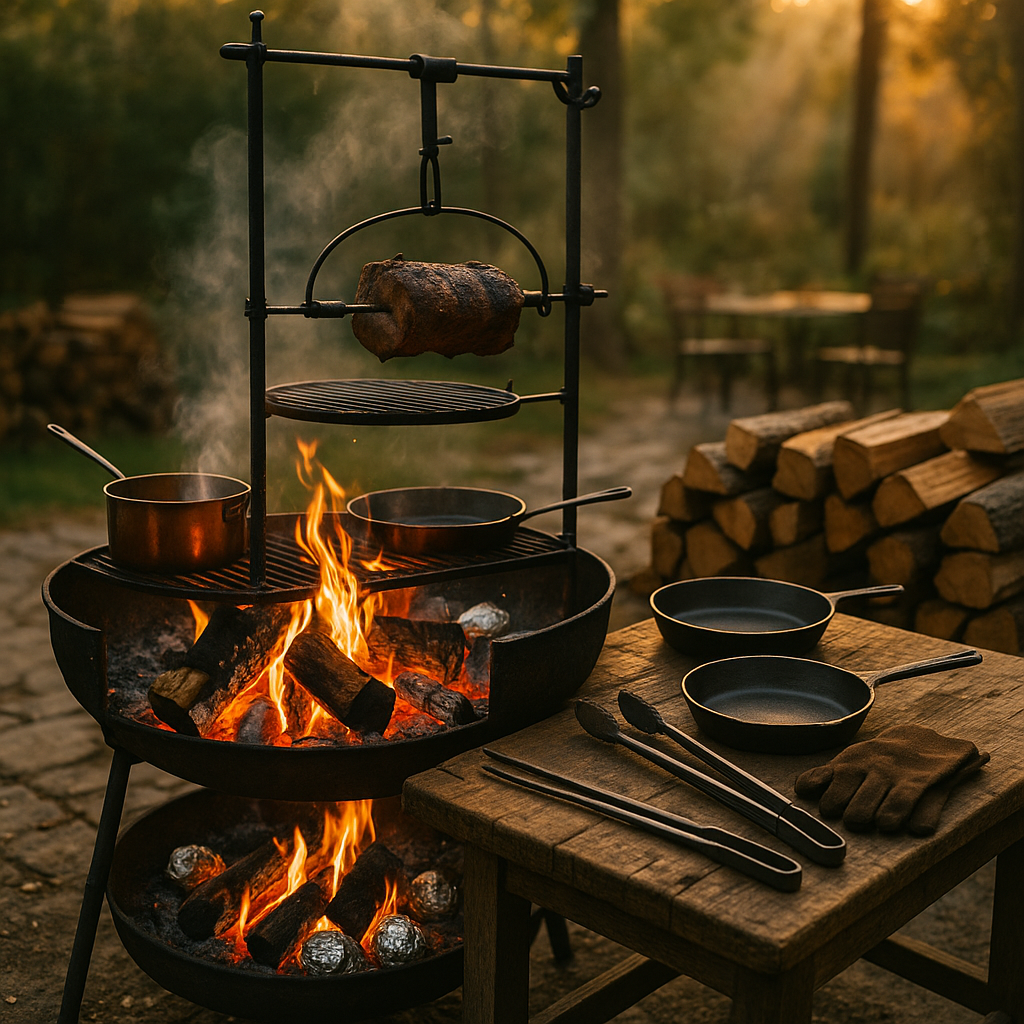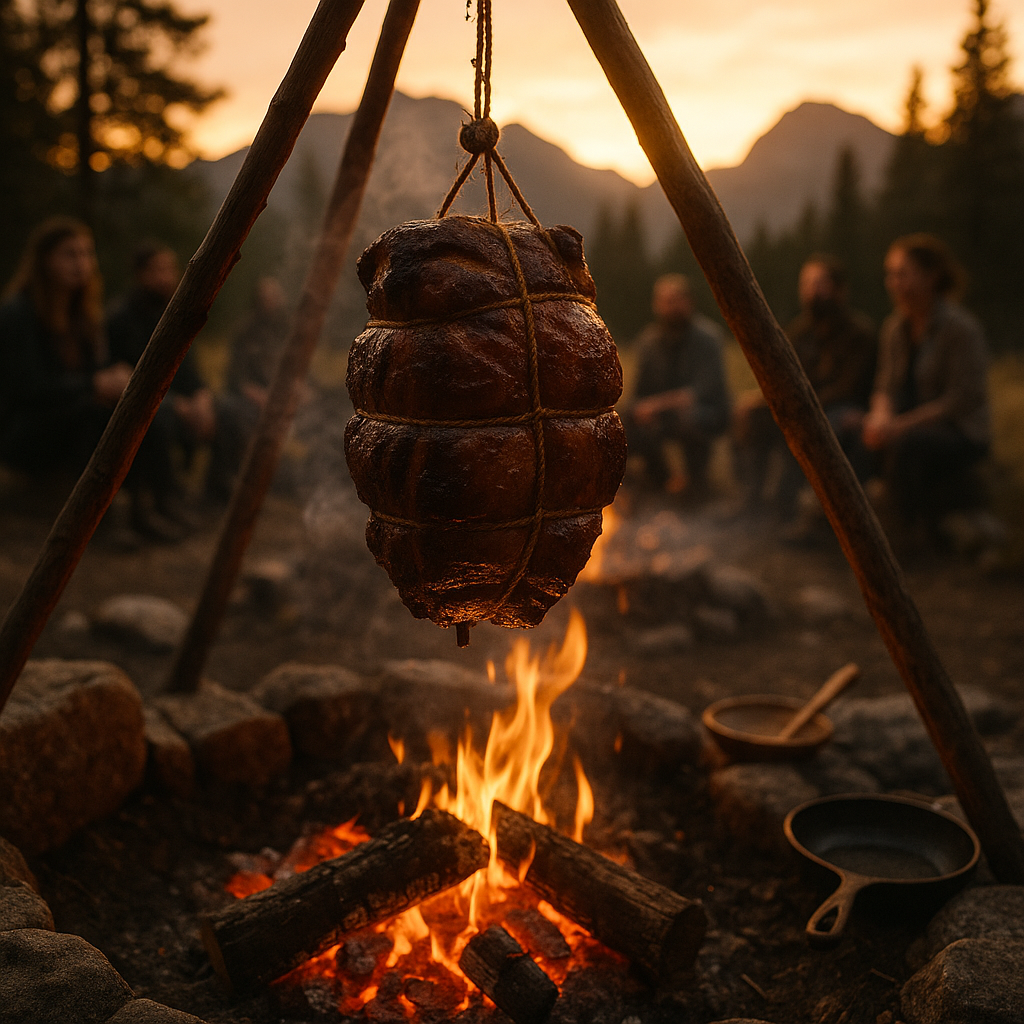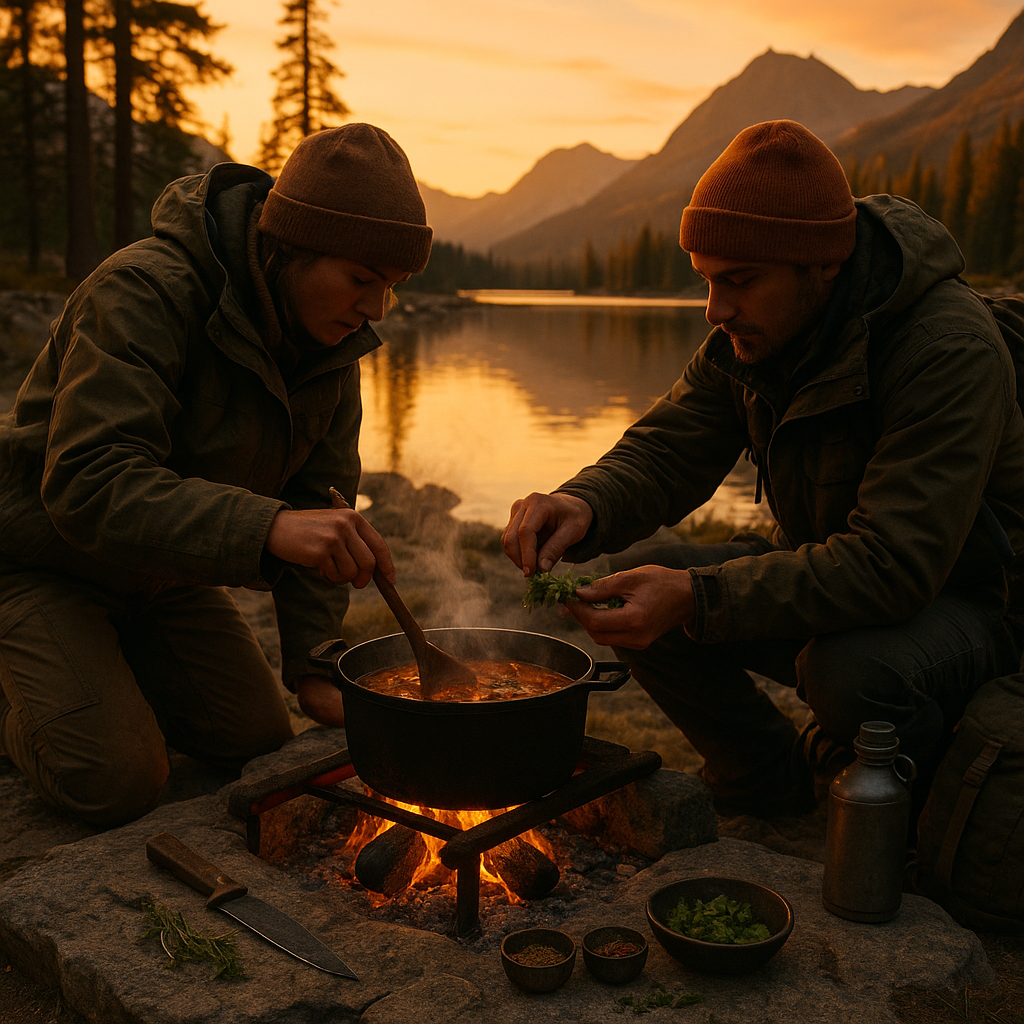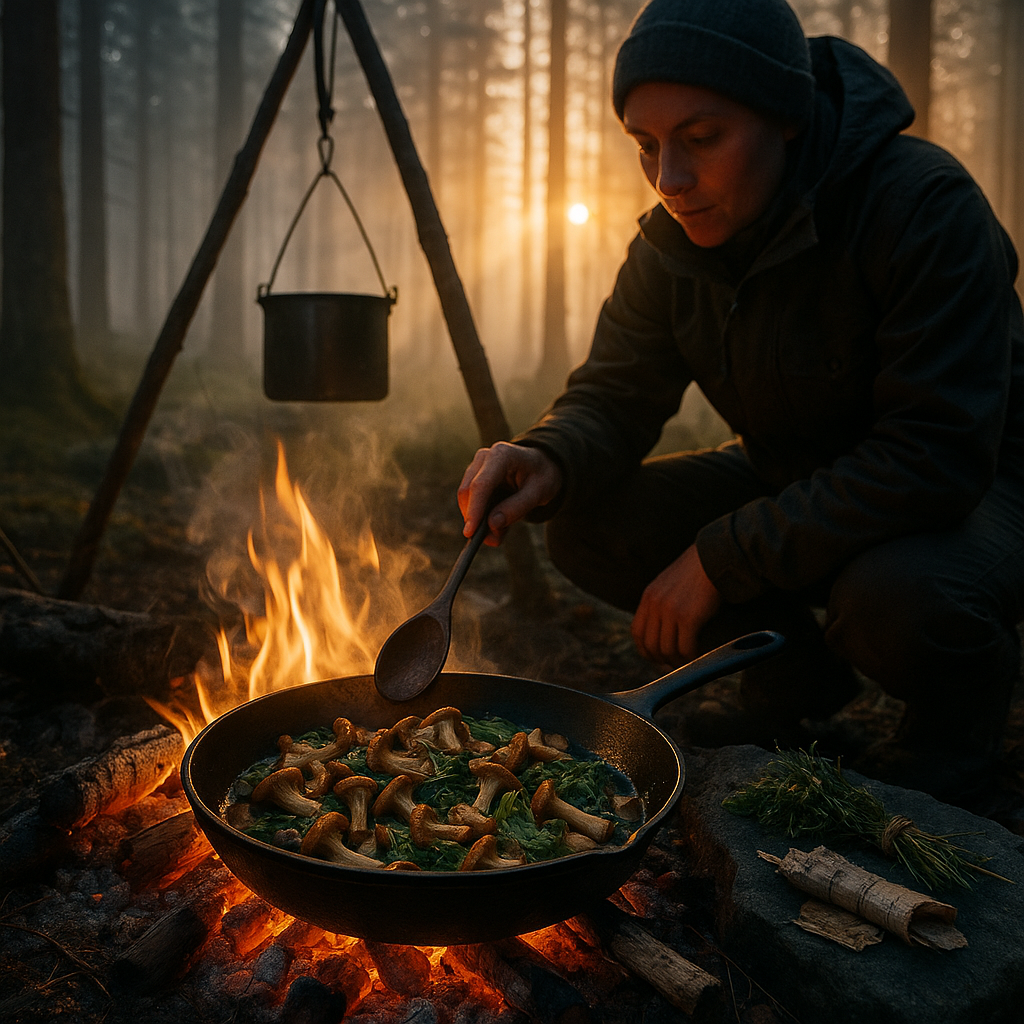Key Takeaways
- Elevate your technique with live-fire cooking essentials. Approaches such as direct grilling, indirect grilling, spit-roasting, and ember cooking expand the culinary landscape far beyond traditional grilling, unlocking endless creative possibilities.
- Master temperature control for flawless results. Managing flame intensity, airflow, and food placement is foundational to live-fire cooking. These skills ensure both robust cuts and delicate ingredients cook evenly and retain their natural flavor and texture.
- Explore foods crafted for flame. While hearty meats often take center stage, fire enhances a spectrum of ingredients. Grilled vegetables, blistered fruits, smoked cheeses, and even flame-touched desserts achieve tantalizing textures and deepen their flavors. Embracing creativity is key to unlocking these hidden delights.
- Reconnect with ancient cooking traditions. From Roman spit-roasting to ancestral pit fires, live-fire cooking honors storied culinary roots. Adapting these time-tested methods for today’s tastes brings a sense of heritage and authenticity to every meal.
- Curate immersive culinary experiences. Pair smoky live-fire creations with thoughtfully chosen wines and rustic sides, transforming each gathering into a multi-sensory event that lingers in memory long after the embers cool.
- Invest in quality tools for success. Fireproof gloves, adjustable grates, durable skewers, and heavy-duty cookware ensure a safer, more enjoyable, and efficient live-fire cooking experience, empowering both novice and seasoned cooks.
Live-fire cooking is a vibrant journey that fuses primal technique with modern flair. It seamlessly blends tradition, creativity, and rich flavors. The following sections will guide you deeper into essential equipment, step-by-step methods, and imaginative ideas to bring your open-fire feasts vividly to life.
Introduction
There is a singular magic in gathering around an open fire. The sound of wood crackling, a wisp of smoke curling skyward, the aroma of charring ingredients. It all becomes a sensory hymn, connecting us to both nature and each other. Live-fire cooking is not merely grilling; it is an ancient art, a transformative ritual where culinary creativity meets the raw, unpredictable energy of flame. Here, the kitchen’s boundaries fade and flavors come alive, forged by heat and seasoned by smoke.
By delving into live-fire cooking, you unlock a wide world of tastes and textures, from perfectly charred steaks to delicate, smoky vegetables and lush, caramelized fruits. Each session by the fire becomes a lesson in technique, a celebration of countless traditions, and an open invitation to create new memories. As you embrace the unpredictable beauty of fire, you will find that every meal is an adventure, where food, story, and place intertwine beneath a canopy of sky.
The Elemental Nature of Live-Fire Cooking
Ancient Flames, Modern Methods
Live-fire cooking connects us to the dawn of human ingenuity, a lineage that winds through every corner of the world. The Romans refined this primal craft with elaborate spit-roasting rituals, employing rotifers to tend meats slow-roasting over coals while wine and herbs infused each morsel with complexity. In distant places, indigenous cultures built their cuisines around fire, whether the Argentinian gaucho perfecting asado over glowing embers, or Hawaiians invoking the smoky ritual of the imu earth oven.
Stay Sharp. Stay Ahead.
Join our Telegram Channel for exclusive content, real insights,
engage with us and other members and get access to
insider updates, early news and top insights.
 Join the Channel
Join the Channel
These traditions not only cooked food, but also created sacred spaces for connection, story, and celebration. Today’s resurgence of live-fire cooking is a bridge between ages old and utterly modern, holding fast to ancient wisdom while embracing the endless possibilities of the present. The sights, smells, and warmth of a well-tended flame still resonate across time and culture, offering something deeper than simple sustenance.
As we stand at the crossroads of heritage and innovation, live-fire cooking becomes a living testament to human adaptability, ever evolving, yet grounded in respect for those who came before.
Understanding Fire Management
True mastery of live-fire cooking lies in skillful fire management. Where gas-fueled grills offer predictability, open flames demand adaptability and close attention. The artful interplay of fuel, airflow, and temperature transforms fire from a destructive force into a culinary ally.
- Fuel Selection: Hardwoods like oak, hickory, or maple provide steady heat and rich, nuanced smoke. Fruitwoods (such as apple, cherry, or pecan) impart delicate, sweet notes to lighter dishes or desserts. For a taste of the Mediterranean, grapevines or olive wood can add subtle, regionally inspired flavors.
- Fire Positioning: Creating distinct cooking zones, one for searing, another for slow-cooking, allows for greater control over both temperature and cooking time, letting you adapt the process to each ingredient.
- Airflow Management: Adjusting how air reaches the fire, whether by venting, arranging logs, or opening grill lids, influences the intensity and quality of the flames.
- Height Adjustment: Modifying the distance between food and embers permits precision, from high-heat charring to gentle, indirect roasting.
With practice, cooks develop the intuitive sense to “read” their fire, the color of the flames, the feel of heat on the hand, the scent of different woods, to guide every step of their process.
Essential Equipment and Setup
Embarking on live-fire cooking calls for thoughtfully chosen gear that blends tradition, practicality, and durability:
- Primary Cooking Structures: Heavy-duty fire pits, Argentinian-style grills with adjustable grates, permanent brick hearths, or portable cowboy tripods allow for versatility whether cooking at home, in a forest clearing, or by a mountain stream.
- Essential Tools: Long-handled tongs and sturdy spatulas keep hands safely distant from the heat. Heat-resistant gloves and aprons are vital for protection. Cast iron pans and Dutch ovens thrive in these environments, distributing heat evenly and capturing smoke. Ember rakes, shovels, and chimney starters streamline the process from lighting to clean-up.
- Safety and Organization: A clear, stable area for equipment, accessible fire extinguisher, and organized work surfaces ensure both a smoother workflow and greater peace of mind.
Arrange your setup to establish clear zones, searing, roasting, warming, so you can manage multiple ingredients simultaneously and keep the dance around the fire both safe and graceful.
Techniques and Methods
Live-fire cooking extends far beyond the familiar hamburger or steak, offering several time-honored methods for unrivaled variety and depth:
Direct Grilling
This classic approach places food directly over high heat, ideal for quick-searing steaks, vegetables, and flatbreads. Intense flames create the beloved charred crust while sealing in moisture, evoking flavors unattainable in a kitchen oven.
Ember Cooking
Nestling ingredients in or near glowing coals delivers evenly distributed, radiant heat. Root vegetables like beets, sweet potatoes, or onions transform into sweet, smoky delicacies, their interiors melting into silky perfection. Ember-roasted garlic, nuts, and cheeses take on heightened character with every crackle of the fire.
Spit-Roasting and Hanging Methods
Suspending meats or even whole fish above the flames allows slow, self-basting cooking. This creates juicy, tender results with minimal intervention. The slow rotation of a spit or gently swinging branch ensures evenly rendered fat and a crisp, golden exterior.
Indirect and Reflective Heat Techniques
Banking coals to one side, or placing a barrier between flame and food, makes it possible to cook large or delicate items more gently. Bread, pizza, even dessert can be coaxed to perfection this way, developing a crisp crust and softly smoky undertones.
Matching technique to ingredient, using high heat for tender steaks, slow heat for tough cuts, or creative ember-cooking for vegetables, unlocks each ingredient’s fullest potential.
Food Selection and Preparation
The journey to fire-forged flavor begins with choosing and preparing the right ingredients:
- Meat Selection: Opt for cuts with marbling or moderate fat to prevent dryness over high heat. Room-temperature meat promotes even cooking, while thicker pieces may benefit from brief brining or marinating to maximize tenderness and flavor.
- Vegetable Prep: Brush vegetables with oil to prevent sticking and encourage caramelization. Slice uniformly for consistent doneness. Dense veggies (like carrots or potatoes) can be par-cooked to ensure a creamy interior or wrapped in foil for extended fire time.
- Cheese and Fruit: Hard or semi-firm cheeses develop beautiful smoky crusts,





Leave a Reply